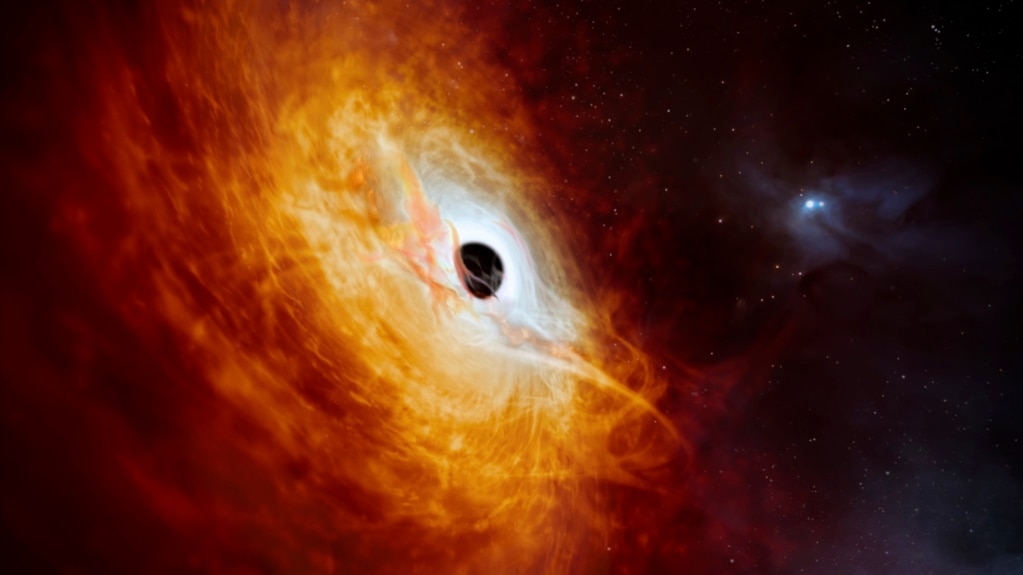Astronomers say they may have discovered the brightest object ever observed in the universe.
The discovery involves a distant space object known as a quasar. The American space agency NASA describes quasars as “very bright, distant and active supermassive black holes that are millions to billions of times the mass of the Sun.”
A quasar’s light “outshines” all other stars and “its jets and winds shape” its galaxy, NASA adds.
A team led by Australian researchers identified the super bright quasar. The European Southern Observatory’s (ESO’s) Very Large Telescope, based in northern Chile, collected most of the data. Additional data came from Australia’s Siding Spring Observatory.
The researchers estimate the record-breaking quasar is at least 500 trillion times brighter than our own sun. The team also noted the black hole powering the object is more than 17 billion times larger than our sun.
The quasar is about 12 billion light years away from Earth. It is thought to have existed since the early days of the universe. A light year is the distance light travels in a year – about 9.5 trillion kilometers.
The object was already known and had been studied before. But scientists say it was misidentified in the past as a star. The newly identified quasar is so large that its black hole could easily swallow at least one sun per day, the team said.
The researchers recently reported their finding in a study in the publication Nature Astronomy.
The quasar appears only as a small dot in images. But scientists say they imagine it to be a very powerful and active place. The team says the black hole is thought to have a circulating disk containing gas and other matter from swallowed stars. The disk spins continuously like an intense, active storm.
“This quasar is the most violent place that we know in the universe,” said the lead writer of the study, Christian Wolf. He is an astronomer and professor in the College of Science at Australian National University.
The ESO first found the object, known as J0529-4351, in 1980. At the time, it was identified, or classified, as a star. Then last year, it was identified as a quasar.
The latest observations and computer modeling suggest the quasar is taking in amounts of material equal to about 370 suns a year, or about one per day. The team says more observations will be needed to fully understand the object’s growth rate.
Priyamvada Natarajan is a professor of astronomy and physics at Yale University. She was not part of the latest study. But Natarajan told the Associated Press, “The exciting thing about this quasar is that it was hiding in plain sight and was misclassified as a star previously.”
Study co-writer Christopher Onken added, “It is a surprise that it has remained unknown until today, when we already know about a million less impressive quasars.”
The researchers say finding and studying distant supermassive black holes could help astronomers learn important details about the birth and development of the early universe. But study leader Wolf noted that he also gets enjoyment out of the search itself.
“Personally, I simply like the chase,” he said in a statement. “For a few minutes a day, I get to feel like a child again, playing treasure hunt. And now, I bring everything to the table that I have learned since.”
Future research is expected to center on the history of the quasar and measuring its growth and development. The team noted that some of this data should be easier to collect after the Very Large Telescope receives an instrument upgrade. The upgrade, known as Gravity+, is designed to provide more exact measurements of the mass of distant black holes.
In addition, the ESO plans to launch a future observer, called the Extremely Large Telescope (ELT), in Chile’s Atacama Desert. That telescope, the researchers say, will improve on current identification and study methods to identify such distant objects.
I’m Bryan Lynn.

